The goddess’ new clothes! Scientists discover traces of paint on the Parthenon Sculptures that reveal their TRUE colours
>
Every year, thousands of visitors flock to the British Museum to see the Parthenon sculptures.
The Parthenon Sculptures, also known as the Elgin Marbles, are a group of ornate marble statues taken from the Temple of Athena on the Acropolis in Athens.
While the famous marble sculptures are now white, a new study suggests they were once brightly coloured.
Researchers from the Institute of Arts chicago The goddess’s clothing in particular was found to be heavily decorated, with designs perhaps showing running figures or floral patterns.
Dr. Giovanni Ferri, principal investigator“It is likely that the elegant and elaborate clothing was intended to represent the power and might of the Olympian gods, as well as the wealth and reach of Athens and the Athenians,” he said.
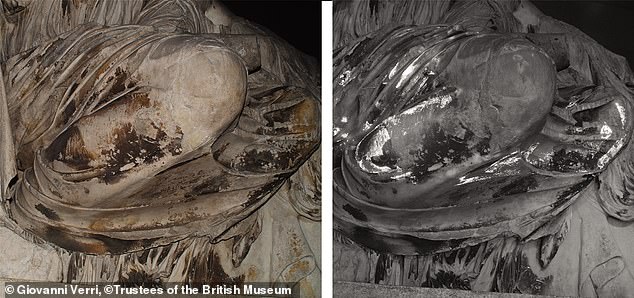
Researchers have discovered that the Parthenon sculptures housed in the British Museum are covered in traces of brightly colored paint
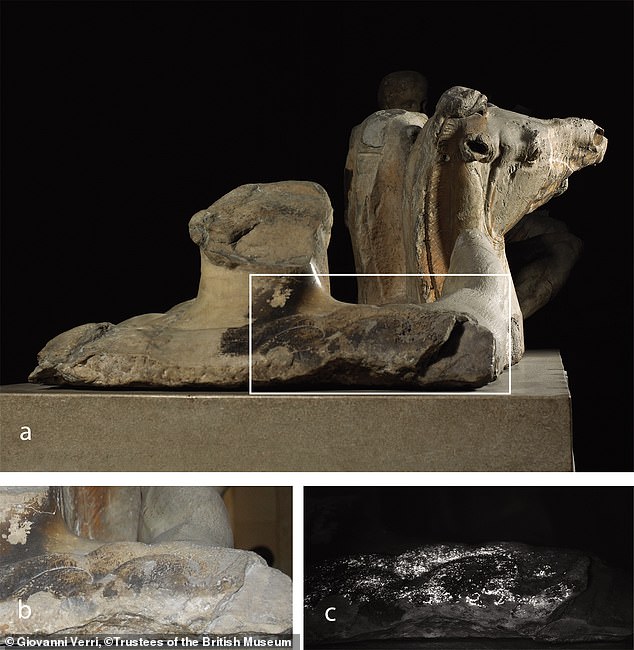
Special imaging techniques reveal areas where microscopic amounts of blue pigment called Egyptian blue remain
These sculptures are believed to have been made in 447 BC and 432 BC, i.e. more than 2,400 years ago.
It consists of a frieze showing a procession celebrating Athena’s birthday, a number of panels showing fighting centaurs, and various statues of Greek gods.
In the study, the researchers used a technique called visible luminescence imaging to detect microscopic traces of pigments on the stone.
This technique, developed by Dr. Ferri, has been used to detect even the smallest traces of a dye called Egyptian Blue.
Egyptian blue is composed of calcium, copper and silicon and is the oldest synthetic pigment in the world, having been first used in Egypt around 3000 BC.
Using this technique, the researchers were able to clearly see areas of the Parthenon sculptures that were covered in large amounts of bright blue paint.
The analysis also discovered small amounts of white and purple pigment on the Parthenon sculptures.
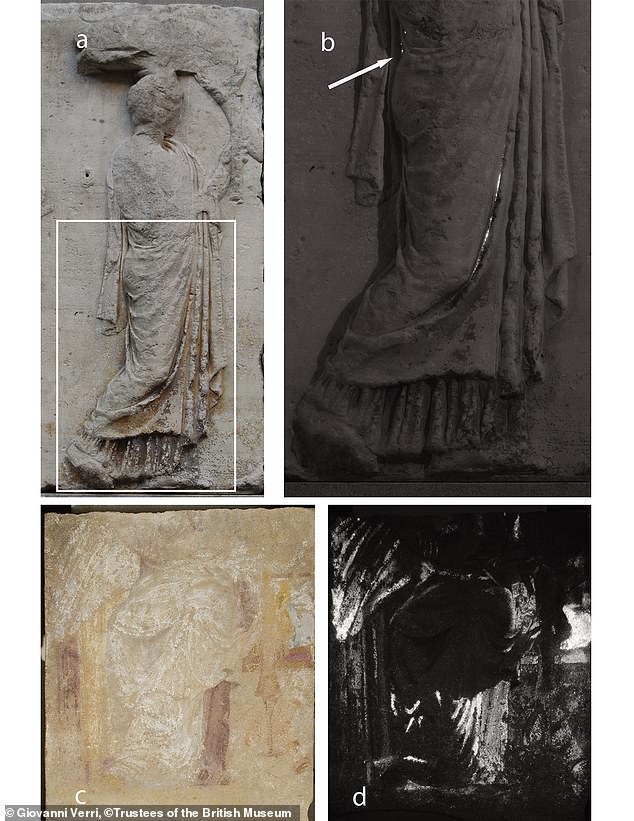
While researchers in the past believed that all Greek sculptures were solid white, this new analysis suggests that they were more colorful.
True purple dye was highly prized in the ancient world because of its expensive production process.
Tyrian purple, or royal purple, can only be made from the mucus of certain species of predatory sea snails and other shellfish.
However, Dr. Ferri found that the color Parthenon Purple was not produced from oysters.
While the exact nature of purple remains unclear, classical texts refer to secret recipes for non-shell purples of “beauty beyond all description.”
Because paint often does not last long when exposed to the elements, by the time ancient Greek sculptures were being studied, most of the colors had already worn off.
This gave rise to the belief that Greek art used only white marble – an idea that had a major impact on the history of Western art.
Historical restorations of ancient sculptures often remove any remaining traces of paint in the belief that it must have been added sometime after the original sculpture was created.
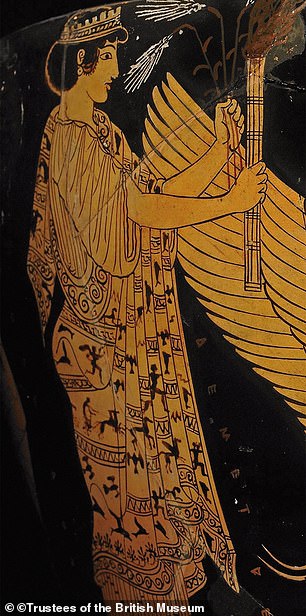
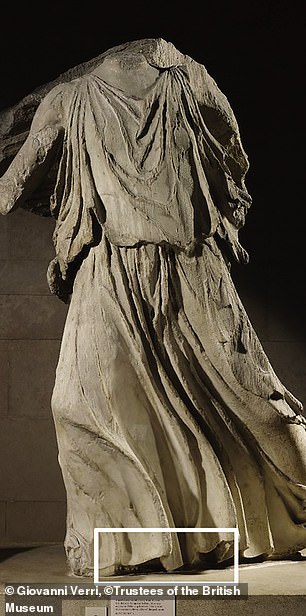
Dr. Ferry believes that the sculptures’ clothing may have been decorated with running patterns just like those depicted in vase paintings from the same era.
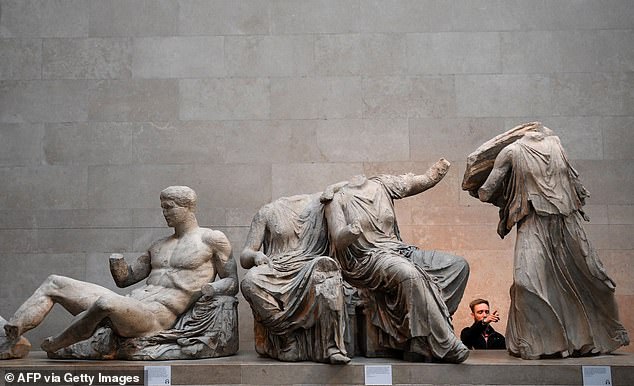
Far from being pure white, the Parthenon sculptures in their original state were a riot of bright colors and patterns
Although the belief that ancient sculptures were painted was originally dismissed as nonsense, the theory has now gained widespread acceptance.
Improved chemical analysis techniques and better imaging have allowed scientists to find minute traces of once gaudy designs.
Researchers say that the Parthenon sculptures may have influenced the use of color in other sculptures from the same period and works that came after it.
As such, Dr. Ferri claims that this discovery may have important implications for our broader understanding of ancient Greek art.
This year, the Met Museum in New York hosted an exhibition showcasing reconstructions of ancient Greek and Roman sculptures in the colors in which they may have once been painted.
Far from the monochromatic white you might associate with a gallery of ancient sculptures, these reconstructions displayed bright colors and bold patterns.
One sculpture of an archer from an ancient Greek temple wears a long-sleeved diamond-patterned pullover and a bright yellow jacket decorated with griffins and lions.
Vinzenz Brinkmann and Ulrike Koch Brinkmann, who prepared the reconstruction, wrote that “these exquisitely decorated clothing of the famous knights of the northern and eastern neighbors of the Greeks can be clearly seen with the help of ultraviolet and radiant light.”
Dr Ferry said: “The Parthenon sculptures in the British Museum are considered one of the pinnacles of ancient art and have been studied for centuries by a variety of scholars.
“Despite this, no traces of the colors have ever been found and little is known about how they were carved.”
Tom Harrison, Keeper of Greece and Rome at the British Museum, added: “This research has set the scene perfectly for future investigations into these and other important World Heritage objects in the British Museum’s collection.”
The Elgin Marbles have been a constant source of controversy since their arrival in the United Kingdom in 1806.
In the early 19th century, the Ottoman Empire had been the ruling power in Athens for several hundred years.
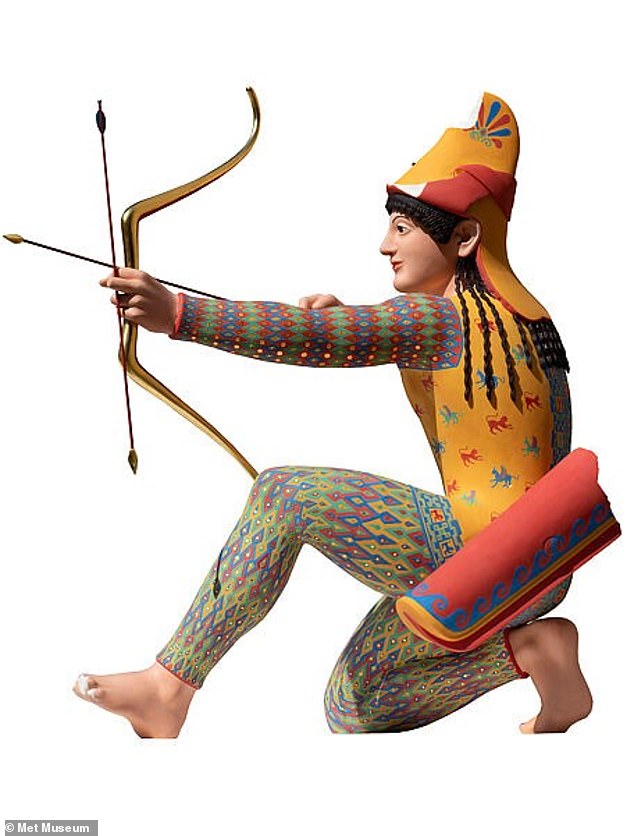
This ancient Greek archer was painted from the temple to show what he originally looked like before the colors faded
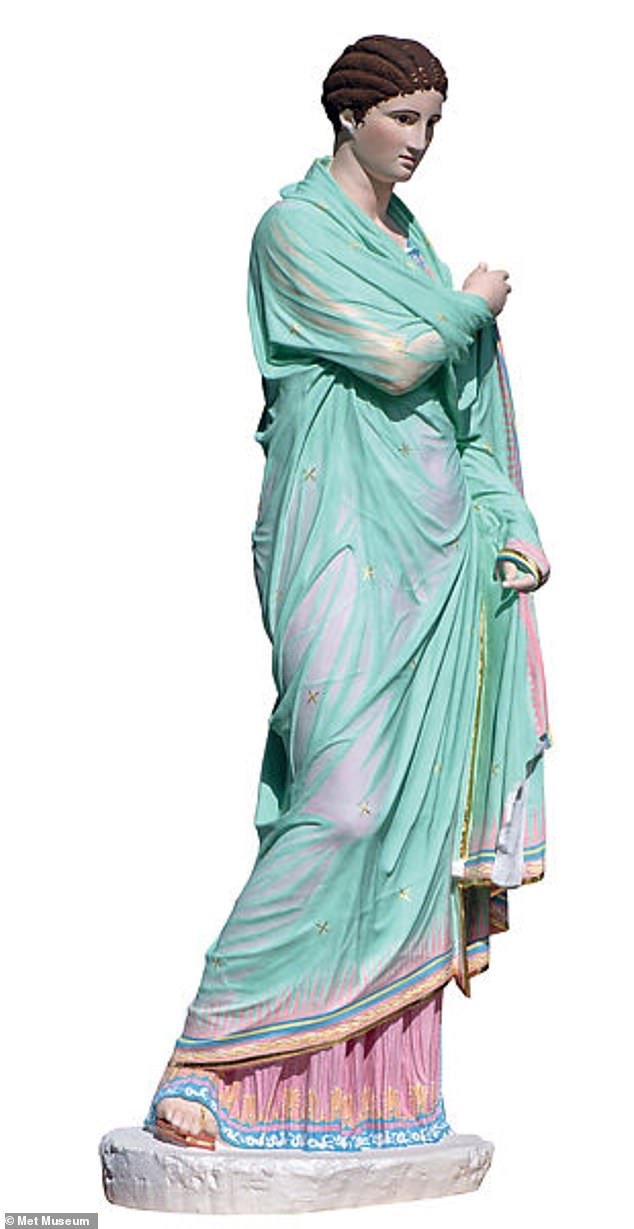
The robe of this statue from the Met Museum in New York is painted in the same Egyptian blue color found on the Pantheon sculptures
Lord Elgin was the British ambassador to the Ottoman Empire, and between 1801 and 1803 obtained permission to remove items from the largely ruined Parthenon.
Lord Elgin, who was a collector of art and historical artifacts, claimed that he removed the sculptures for fear that they would be damaged by occupying Ottoman forces.
However, upon his arrival in England, Lord Elgin was harshly criticized by prominent figures including Lord Byron.
The Parthenon became a symbol of Greece’s modern nation-state after its independence from the Ottoman Empire, and the Greek government has made repeated requests to return the sculptures.
The British Museum insists that the sculptures will remain part of the permanent exhibition in London and will not be returned.
“The Parthenon sculptures are an integral part of that story and a vital element of this interconnected global collection, especially in the way they convey influences between Egyptian, Persian, Greek and Roman cultures,” a statement on the British Museum’s website said. ‘
However, the museum also notes that talks are underway with the Parthenon Museum in Athens to create a partnership between the two groups.
In January, there was speculation that the sculptures could be returned to Greece under a long-term loan deal brokered by former Chancellor and head of the British Museum George Osborne.
(Tags for translation)dailymail
